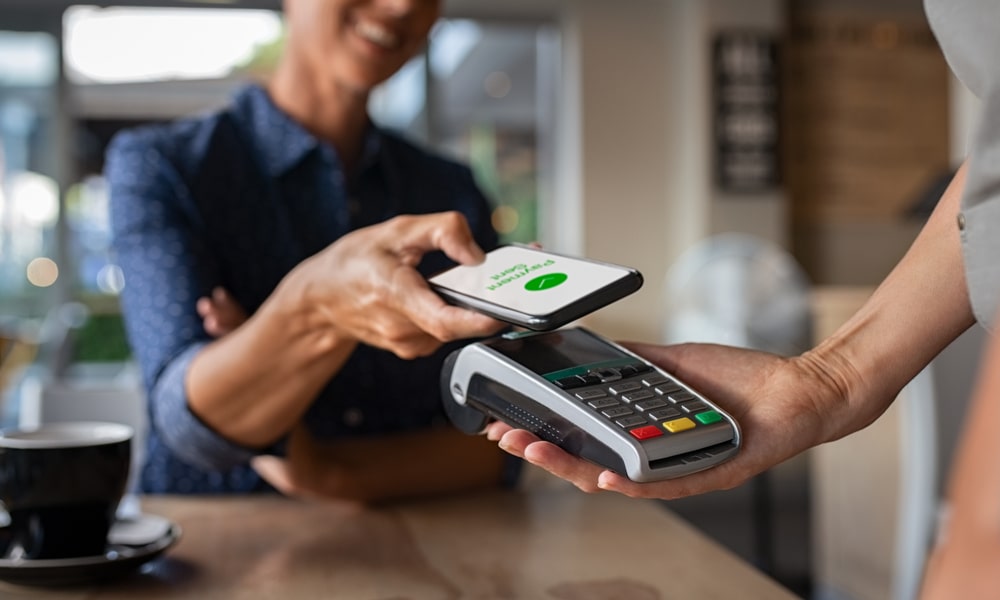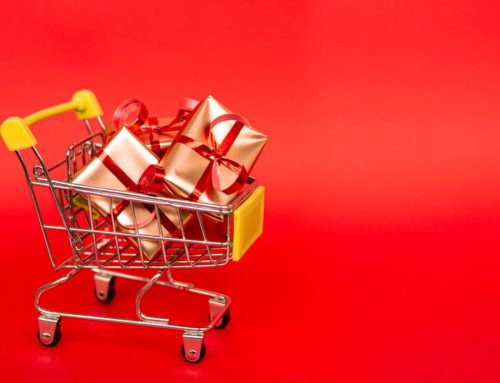For many people nowadays, leaving the house means checking you have your keys, your phone and your bank card. That’s it – no wad of banknotes or purse filled with heavy, grubby change. They have discovered the benefits of contactless payment.
Contactless payment is rapidly becoming the accepted method in the places we spend our money. That could be the supermarket, the coffee shop or the pub. Why has it become the familiar and, in these times, the preferred way to pay? There are a number of advantages to contactless payment for both the consumer and business owner, and we’ll look at these more closely.
What is contactless payment?
Back in the day, it was all about cash. It still is to an extent. According to the Bank of England, even in pandemic times “the total value of banknotes in circulation has increased”. However, people use far less cash for daily transactions. Then came the payment options of credit cards and cheques. But when was the last time you wrote a cheque
Contactless is the next generation on from ‘chip and pin’. The card was swiped or insertedinton a card reader then we entered a PIN to verify the sale. It’s often still a necessity to use a PIN at the point of sale, for reasons we’ll discuss later.
The big change came with Near Field Communication technology (NFC). This enables secure digital transactions to be made with a touch of the card. NFC and contactless payment have brought about plenty of advantages for customers and businesses alike. We look at ten benefits of contactless payment for consumers and businesses alike, and why every company should switch.
1. Speedy checkout for customers
Customers are happy with contactless. It means they can pay and get away, moving on to the rest of their day. A swift tap of the card is all it takes. It’s simple, speedy and eliminates the possibility of being observed while fumbling for change or trying to remember a PIN. And that speed filters down the queue so customers can see they’ll be at the till soon.
2. Faster turnaround for business
When customers can get through the till area quicker, the queues are shorter. Goods and transactions are processed much faster, with reduced waiting time. This is great news for customers – a slow checkout is a big reason shoppers abandon a purchase. But it’s also good for business. It frees up staff to work in other parts of the store, keeping it well stocked and tidy.
3. No need for PIN
Contactless payment certainly speeds up checkout time. Plus, it means no more frustration or embarrassment at not remembering a PIN. The tension of trying your PIN for the third and final time has vanished.
We have all been there – using the PIN for a different card, getting a complete mental blank over the number, the confusion of so many passwords and numbers to remember. Contactless brings a sense of calm to the whole procedure.
4. Pandemic friendly
Does every article written from 2020 onwards have to mention the pandemic? Well, we are in our right to do so here because contactless has been crucial in cutting down possible Covid infection.
Tapping the card rather than the keypad has provided extra reassurance around hygiene. Every now and then customers are asked to enter their PIN on the keypad (we’ll get to why later). This makes us much more aware of touching the keypad and (hopefully) sanitising pretty soon after.
Businesses have also actively discouraged the use of cash. Their fears lie with the possibility of Covid transmission via banknotes and coins. That now seems like such an obvious step forward in overall hygiene practice we have to wonder why it wasn’t done before?
However, the Bank of England undertook research to examine the link between the virus and banknotes. They discovered “the risk of transmission via banknotes is low”. The rise of contactless in pandemic times will probably affect how often cash is used from now on. It also reduces the amount of cash on the premises – an extra security bonus.
5. Security with fixed transaction limits
There will always be concerns about bank card security and fraud. Perhaps people’s biggest worry is card theft. They worry that with contactless, the thief could go on a spree before the owner realises. This is why most banks have set fairly low limits for contactless payment. This has risen to around €50 over the course of the pandemic as shoppers used contactless more often.
Anything above that cap must be paid for using the PIN. The contactless machines are designed to be used in this way. This reduces the likelihood of fraudulent card use as the transaction still requires a PIN.
Setting a cap on transactions boosts security. Cards can be deactivated quickly if stolen, and banks usually act quickly to prevent fraud and reimburse victims. In addition, there is often a limit to the number of daily transactions. Too many and the bank will question the card’s use, which ultimately protects the card owner.
6. Loyalty scheme inclusive
Our reliance on plastic over cash may have increased, but that has its own problems. Customers, and businesses alike, are big fans of loyalty schemes. As a result, this has led to wallets full of reward cards, many of which are forgotten about.
A further benefit of contactless payment is how it can be integrated with loyalty programs. Making a transaction by card can automatically add points or link to discounts for club members. It reduces the need for a plastic loyalty card and ensures customers don’t miss out on the benefits they deserve.
7. Adapts to new technology
Another advantage of contactless payment is that it can be incorporated into phones and even smartwatches. Secure systems like Apple Pay or Google Pay on NFC-enabled smartphones can be used instead of plastic. This means a tap of the phone can pay for your goods.
Public transport in Ireland is transitioning to online ticketing or systems like the Leap card. In other countries, however, public transport can be accessed with a contactless card or phone. This improves access speed and means you don’t need exactly the right change to travel.
8. Easy business switching
With banks promoting the use of contactless, a switch to contactless payment should be simple for businesses. It’s unlikely there will be any significant costs in transferring from chip and pin machines to NFC technology.
9. Improved bank satisfaction
Banks can improve their customer satisfaction rates by providing contactless options. People using contactless payment experience a speedy transaction and see their online balance update almost immediately. This encourages customers to stay true to a bank and see it as a trusted business.
10. Account clarity
Customers appreciate the simplicity and speed benefits of contactless payment. But a further advantage is seeing that payment appear quickly in an account. Because of the technology involved – a request from the point of sale to the bank for authorisation – contactless payments show up rapidly. Most payments made in a day will be visible via online banking the next day.
Some say that using a card for multiple small daily transactions can increase spending. If we are not handing over cash – and when payment is so fast – are we really paying at all? And it has become so easy to tap with the card that we may not acknowledge our actual spending. We are becoming distanced from the idea of money as a tactile, tangible quantity.
That is, of course, a worry. But anecdotal evidence from debt advisors suggests teenagers, in particular, check their bank balances at least daily. This suggests they are much more financially aware. As they move into the world of financial responsibility and increasing technology, this could bode well for clarity regarding spending and budgeting.
Checkout
Many small businesses may want to keep their payment options open, to include cash, and chip and pin. This could be especially so in smaller or rural communities where the customer base is older and less familiar or comfortable with contactless. There will always be a place for cash and it could be some time before businesses are confident enough to reject it.
But the pandemic has taught us that our spending habits and, more importantly, the way we pay for goods, is changing. Businesses will improve the customer experience and speed up their own service with the introduction of a contactless point of sale.
The benefits of contactless payment are likely to spread and this way of payment will become the norm. Look into the options that LumiPay can offer your business and get on board with all the advantages of contactless payment.



